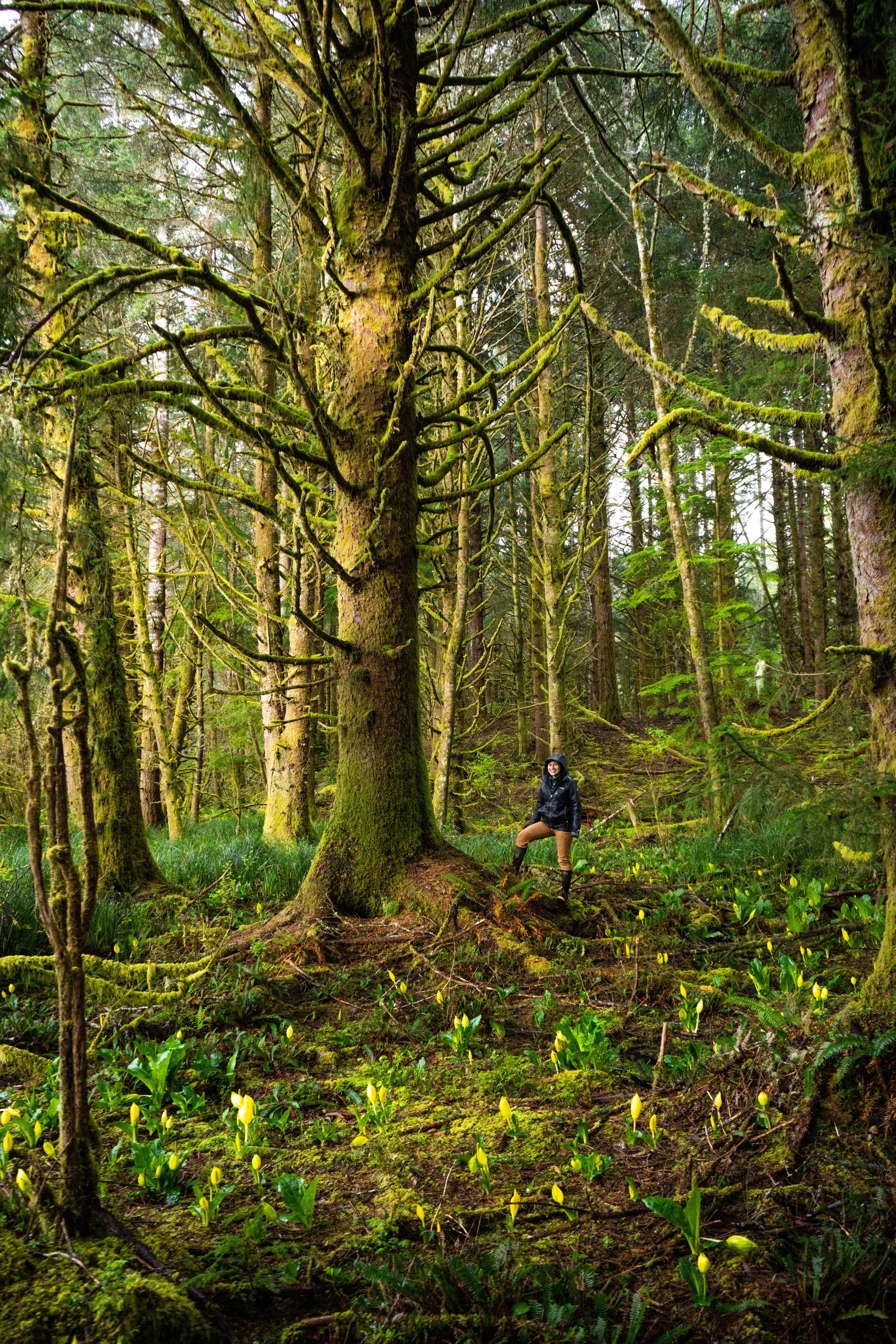Blue Carbon
Blue Carbon refers to the carbon captured and stored in coastal and marine ecosystems, including wetlands such as salt marshes, tidal forests, and seagrass meadows. These ecosystems have the ability to sequester and store significant amounts of carbon dioxide from the atmosphere and ocean, thus playing a vital role in mitigating climate change.
Sitka spruce tower over slough sedge and skunk cabbage in a forested tidal swamp/wetland. Human for scale.
Photo Credit: Steven Mortinson
Wetlands are particularly efficient at capturing and storing carbon due to their unique characteristics. Wetland plants, such as marsh grasses and Sitka Spruce, grow fast and produce organic matter, like wood and leaves. When this organic matter is deposited in wetland soils or sediments, it can accumulate and become stored over long periods, effectively trapping carbon.
The carbon stored in wetland ecosystems is often referred to as "blue carbon" because it is sequestered in coastal and marine environments. Blue carbon ecosystems, like tidal forested wetlands, can store carbon at much higher rates per unit area compared to inland forests.
Fishing boats docked in Yaquina Bay, Oregon.
Photo Credit: Steven Mortinson
Protecting and restoring blue carbon ecosystems has multiple benefits. By conserving and restoring wetlands, we can enhance carbon sequestration, reduce greenhouse gas emissions, and help mitigate climate change. Moreover, healthy wetlands provide other ecosystem services such as shoreline protection, water filtration, habitat for wildlife, and support for fisheries.
Bayview Slough in the Alsea estuary.
Photo Credit: Steven Mortinson
Recognizing the significance of blue carbon, there have been international efforts to include wetland conservation and restoration in climate change strategies. This includes initiatives to incentivize and support projects that protect and restore coastal wetlands as a means of carbon offsetting and climate change mitigation.
Overall, blue carbon highlights the importance of wetlands not only as critical ecosystems, but also as valuable tools in combating climate change by capturing and storing substantial amounts of carbon dioxide.



